Oliver Ressler
14.12.2023 – 24.02.2024
Exhibition views
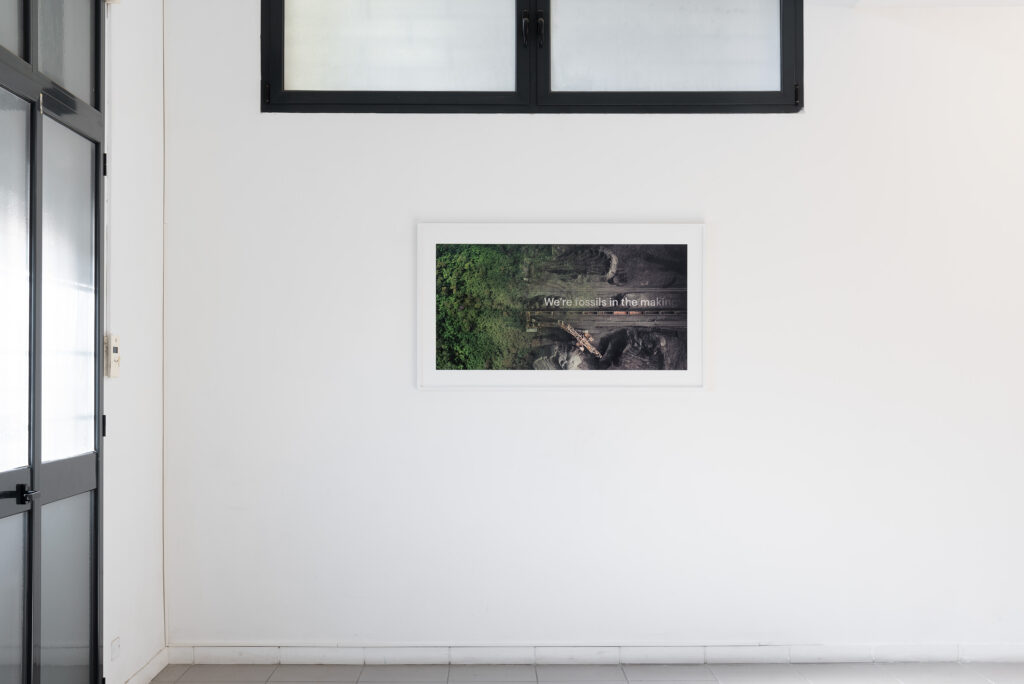
Defending the Future, 2023, installation view at The Gallery Apart Rome (ground floor), photo by Eleonora Cerri Pecorella
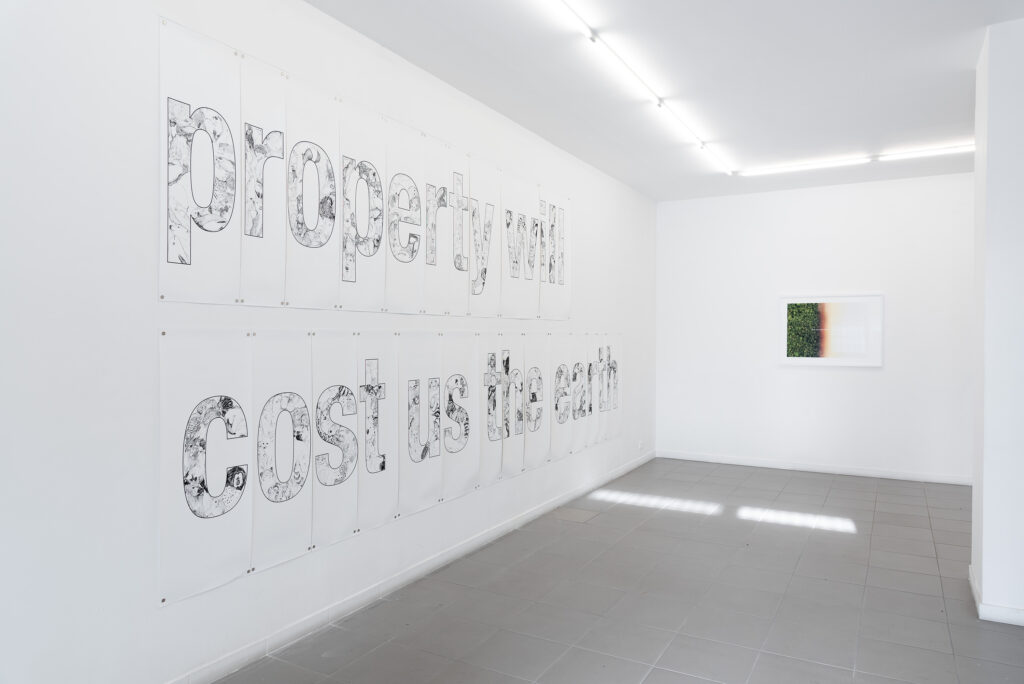
Defending the Future, 2023, installation view at The Gallery Apart Rome (ground floor), photo by Eleonora Cerri Pecorella
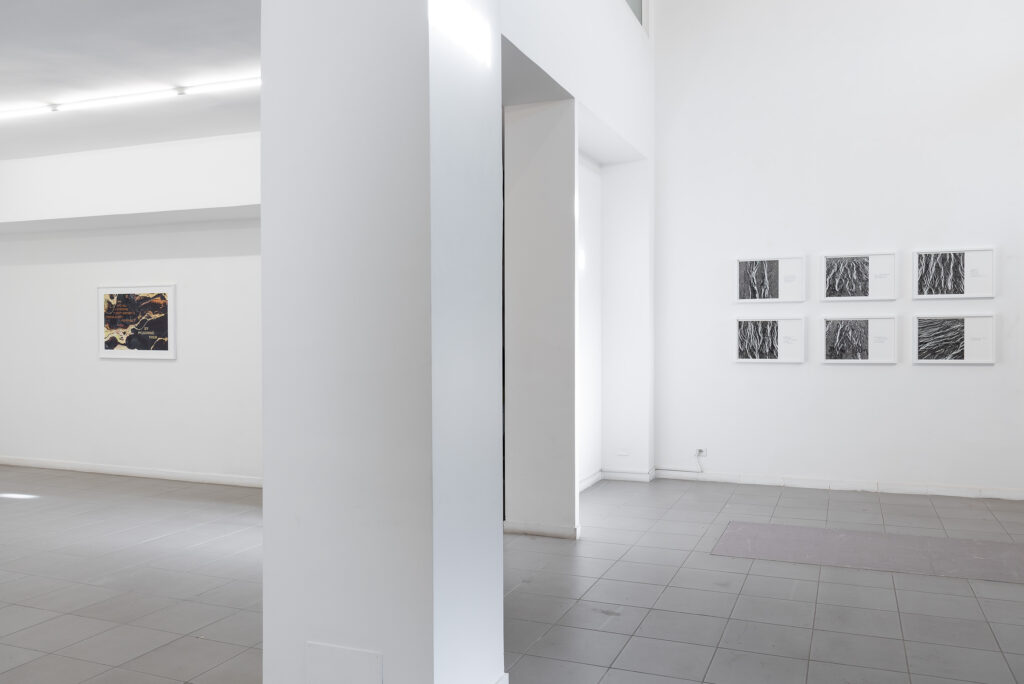
Defending the Future, 2023, installation view at The Gallery Apart Rome (ground floor), photo by Eleonora Cerri Pecorella
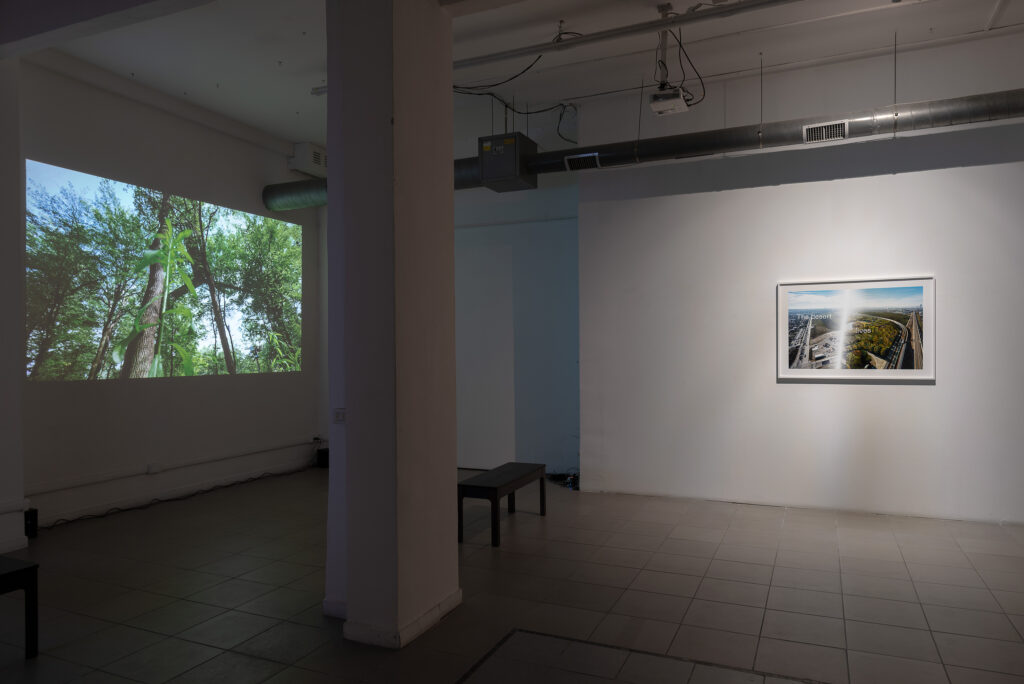
Defending the Future, 2023, installation view at The Gallery Apart Rome (basement), photo by Eleonora Cerri Pecorella
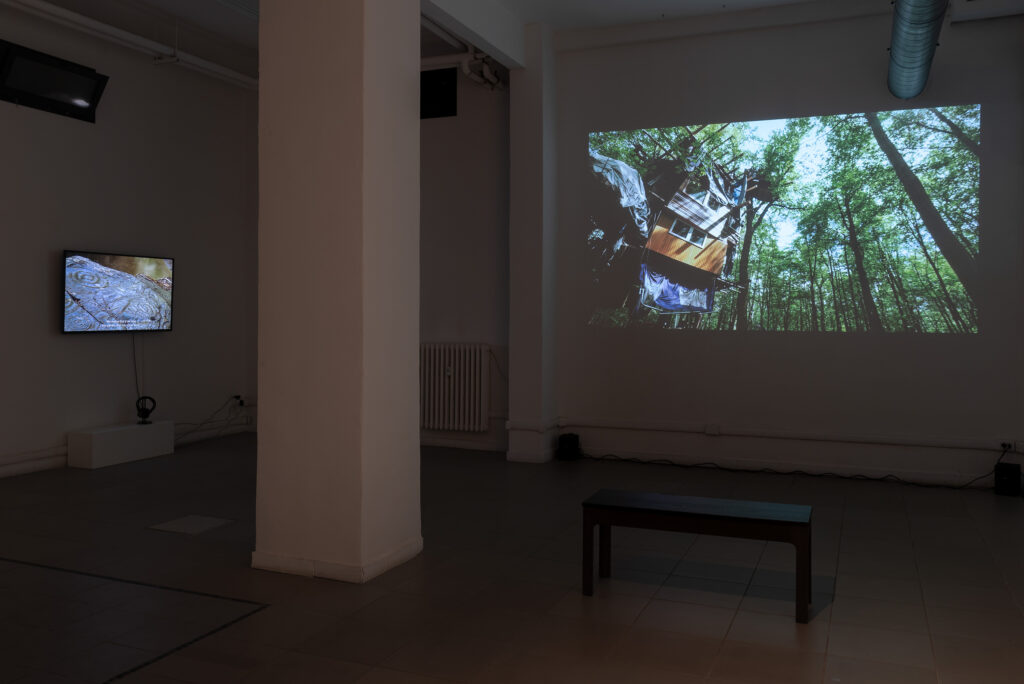
Defending the Future, 2023, installation view at The Gallery Apart Rome (basement), photo by Eleonora Cerri Pecorella
Works
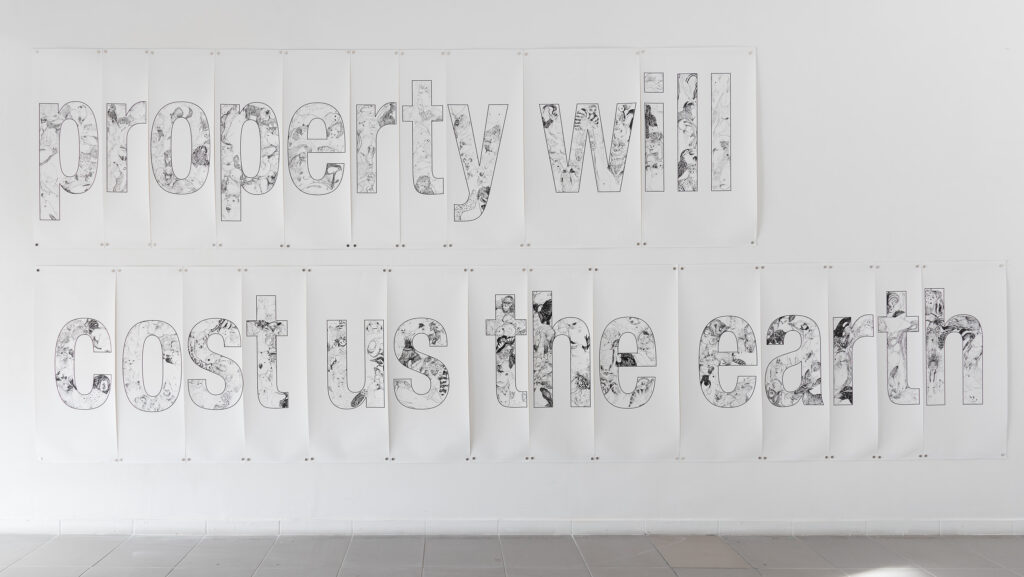
Property Will Cost Us the Earth, 2021, 26 ink drawings on Hahnemuhle Paper (drawings: Claudia Schioppa), 950 x 112 cm
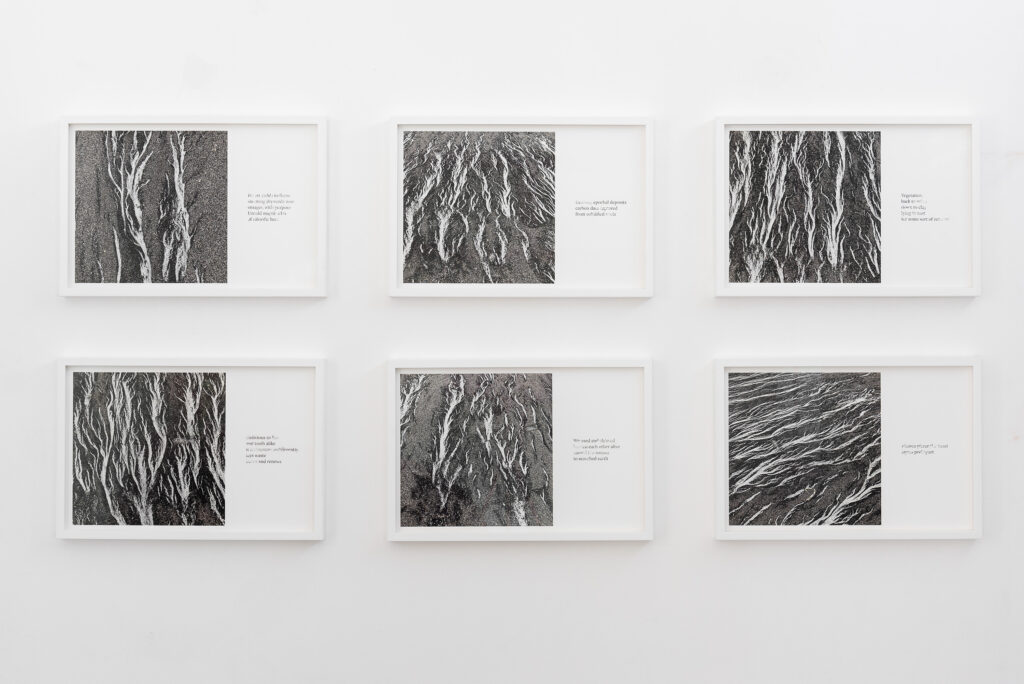
Canopy cut down to sand, 2023, 6 digital prints behind museums glass, framed, 60 x 40 cm
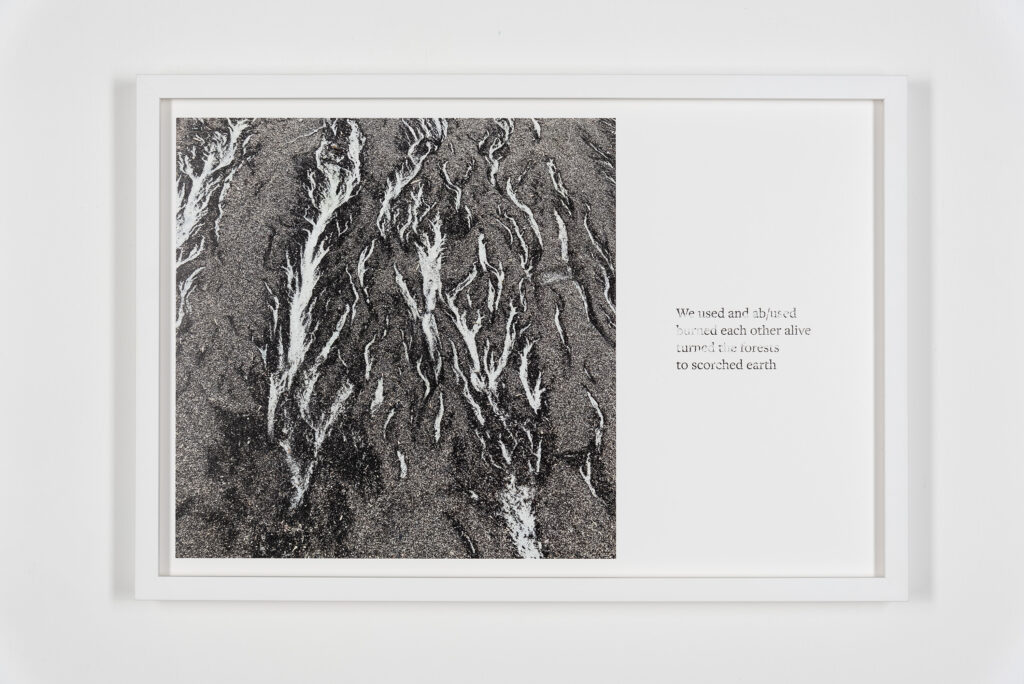
Canopy cut down to sand (details), 60 x 40 cm
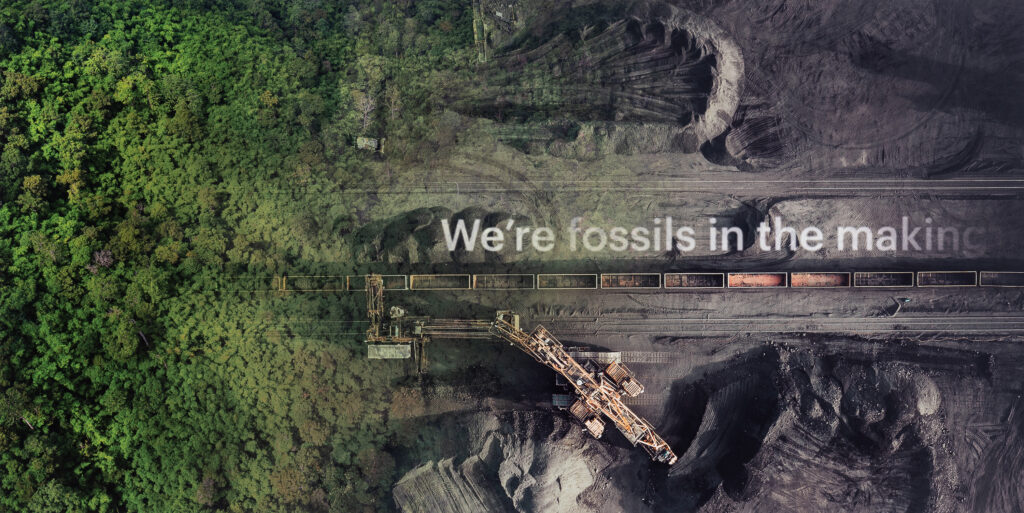
We’re fossils in the making, 2022, digital print on dibond behind museums glass, framed, 136 x 70 cm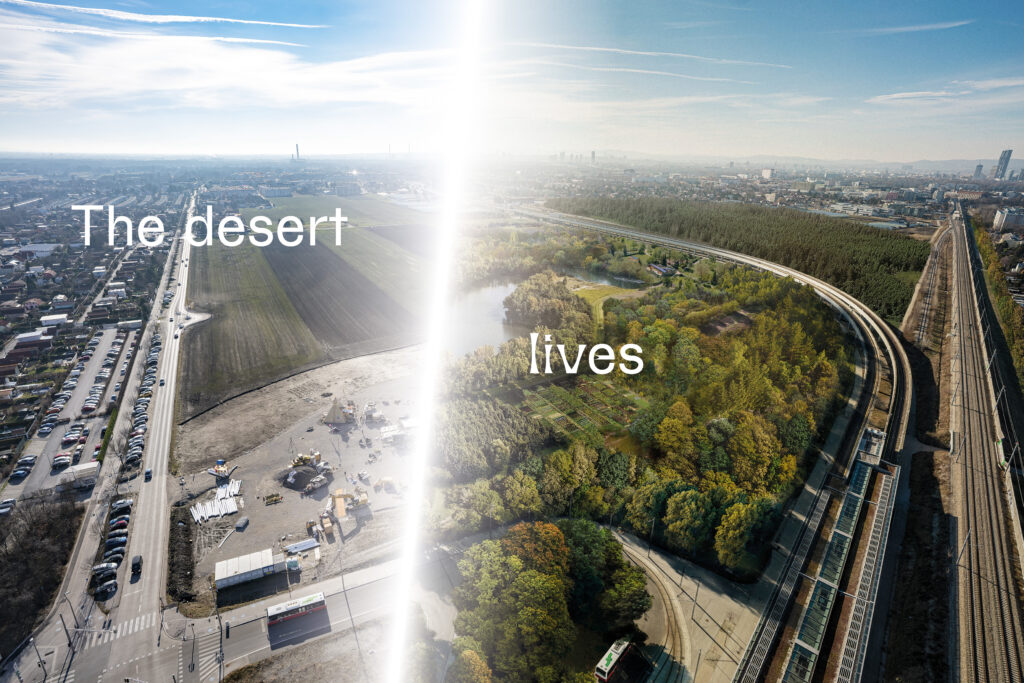
The Desert Lives, 2022, digital print on a dibond behind museums glass, framed, 121 x 86 cm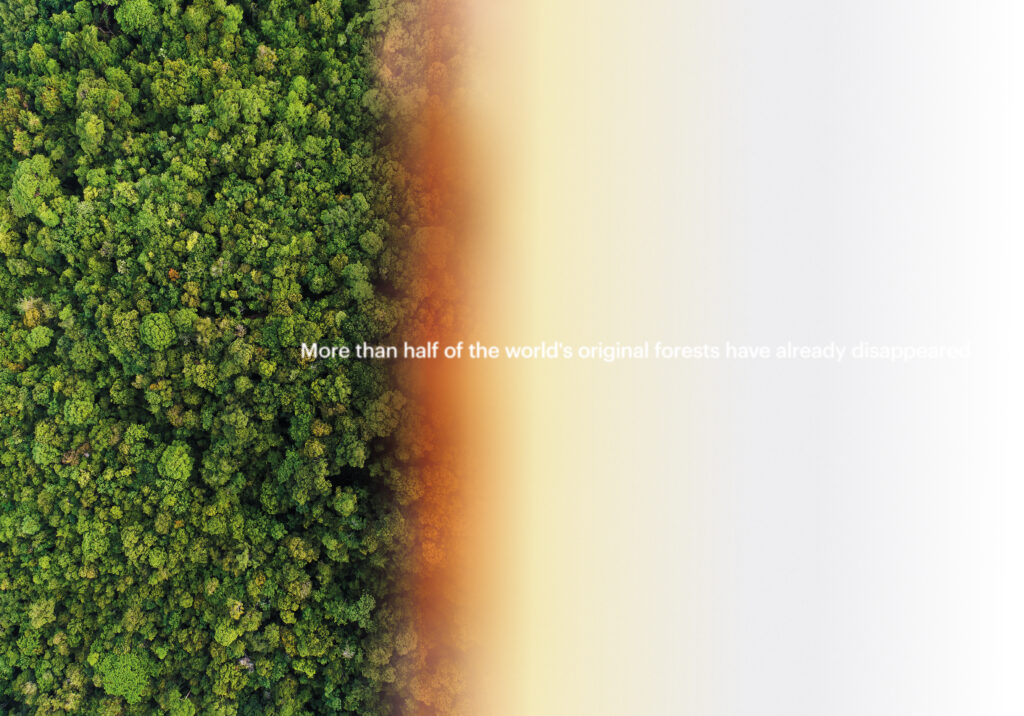
More than half the world’s original forests have already disappeared, 2022, digital print on dibond behind museums glass, framed, 102 x 76 cm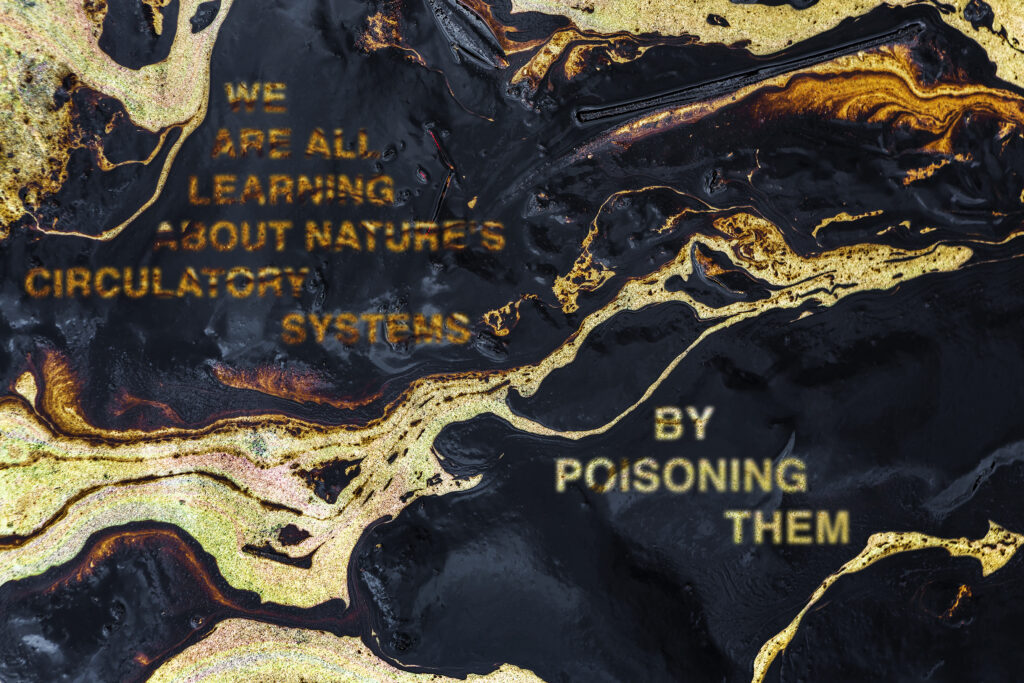
We are all learning about nature’s circulatory systems by poisoning them, 2021, digital print on dibond behind museums glass, framed, 102 x 73 cm 
The Path is Never the Same, 2022, 4K video, 20 min.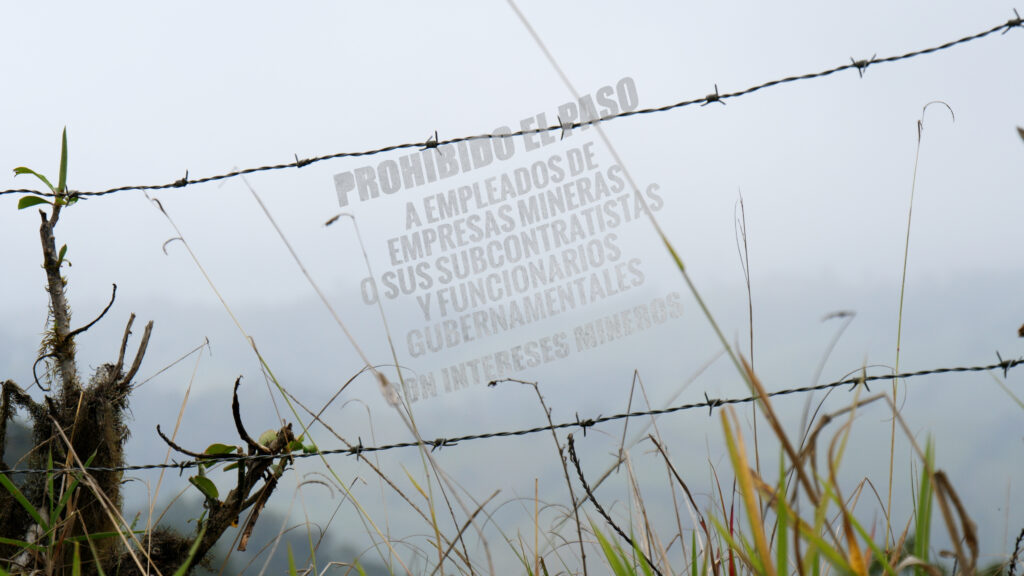
Ancestral Future Rising, 2023, 4K video, 20 min.
The Gallery Apart is proud to announce Defending the Future, the third solo show by Oliver Ressler hosted in the Gallery spaces.
Over the past few years Oliver Ressler has focused primarily on climate breakdown and the multiple strategies and activist practices that seek to stop the catastrophe already underway from worsening. 2023 has been a year of deadly heatwaves, floods and fires, with some of the hottest months ever recorded. It is on track to become the hottest year of the last 120,000. Yet we still see governments worldwide unrestrainedly commissioning construction of new airports, highways and LNG terminals, and providing licenses and funding for new oil- and gas exploration that will lock humanity into fossil fuel use for decades.
Ressler’s third solo exhibition at The Gallery Apart addresses various aspects of this global crisis. The 9,5-meter-long ink drawing Property Will Cost Us the Earth includes the drawings of 400 animals in the eponymous text. All the mammals, birds, fish, amphibia, reptiles and insects depicted are under threat of extinction. Humanity has already reached a phase known to scientists as the 6th Mass Extinction; animals and plants are dying out at the fastest rate since the extinction of the dinosaurs 65 million years ago. Climate breakdown is primarily driven by burning fossil fuels, the remains of dead plants and animals from past eras. If this rate of extinction continues, what one of the photomontages shows will become a terrible reality: We’re fossils in the making
More than half the world’s original forests have already disappeared (2022) can be read in another photomontage in the exhibition. At a time when the world’s largest attempts at reforestation are simply necessary for survival, we still see the ongoing destruction of forests worldwide in the name of profit.
Even though the outlook is bleak, we must not stop fighting for a livable planet. In Defending the Future we see two examples of struggle for the preservation of forests and the prevention of mining operations. In the video Ancestral Future Rising (2023) we follow the struggle of people in Pacto, close to Ecuador’s capital Quito, where the State granted mining concessions for gold, silver, and copper in a region designated by UNESCO as the world’s seventh biosphere reserve. The film gathers voices of communities resisting the new round of extraction that would destroy their environment and livelihood. The campaigners invoke ancestral sites of the Yumbo, KituKara and Inca peoples; culture and nature come together to preserve forests endangered by mining.
The video The Path is Never the Same (2022) focuses on two complex, self-organizing systems: a forest and an occupation. The Hambacher Forest near Cologne (in Germany) has become the scene of Europe’s longest tree-top occupation. Since 2012, about 200 people have been living in this forest to prevent its clearing by the energy company RWE, which wants to extract lignite. The film reflects on the forest as a living space and on the need to confront the climate vandalism perpetrated in the name of “economic activity”. The people here organize non-hierarchically, standing – as one activist puts it in the film – “just like the trees, next to each other, on the same level”.
This alliance between human and more-than-human life is also the topic of the photo series Canopy cut down to sand (2023). Six photographic images show formations randomly drawn into the sand by waves. The drawings on the beach are astonishing, reminding us of flames. The photos were taken on Vancouver Island in 2022, a year when atmospheric CO2 reached 417 ppm. No such concentration of greenhouse gas had ever occurred before since humans first lived on the planet. Storms, droughts, heatwaves and wildfires will lead to a conversion from “living” to “dead” across multiple species and on a massive scale. Forests, an essential source of planetary life, are being burned at an ever-accelerating rate. Each photograph is combined with a few lines freely adapted from Joanne Maria McNally’s poem The Phoenix (2008).
The Gallery Apart è orgogliosa di annunciare Defending the Future, la terza personale di Oliver Ressler negli spazi della galleria.
Negli ultimi anni Oliver Ressler si è concentrato principalmente sulla crisi climatica e su diverse strategie e pratiche attiviste volte ad evitare un peggioramento della catastrofe in corso. Il 2023, un anno di ondate di calore mortali, inondazioni e incendi, ha conosciuto alcuni dei mesi più caldi mai registrati ed è sulla buona strada per diventare l’anno più caldo degli ultimi 120.000 anni. Ciò nonostante, i governi di tutto il mondo commissionano senza ritegno la costruzione di nuovi aeroporti, autostrade e terminali GNL e forniscono licenze e finanziamenti per nuove esplorazioni di petrolio e gas che costringeranno l’umanità all’uso di combustibili fossili per i prossimi decenni.
La terza mostra personale di Ressler presso The Gallery Apart tratta alcuni aspetti di questa crisi globale. Il disegno a inchiostro lungo 9,5 metri Property will cost us the earth” include nel testo eponimo i disegni di 400 animali, fra mammiferi, uccelli, pesci, anfibi, rettili e insetti, tutti a rischio di estinzione. L’umanità ha già raggiunto una fase nota agli scienziati come la sesta estinzione di massa. Gli animali e le piante si stanno estinguendo ad un ritmo più veloce dell’estinzione dei dinosauri 65 milioni di anni fa. Il collasso climatico è dovuto principalmente alla combustione di combustibili fossili, resti di piante e animali morti di epoche passate. Se questa velocità di estinzione dovesse restare inalterata, la frase che si legge su una delle opere esposte diventerà una triste realtà: siamo fossili in divenire.
More than half the world’s original forests have already disappeared (2022) è scritto su un’altra delle opere in mostra. In un’epoca in cui massicci tentativi di riforestazione del mondo sono semplicemente necessari per la sopravvivenza, continua la distruzione delle foreste in tutto il mondo in nome del profitto e dell’attivismo economico.
Anche se le prospettive sono cupe, non si deve smettere di lottare per un pianeta vivibile. Defending the Future propone due esempi di lotte diverse, entrambe legate alla conservazione delle foreste e alla prevenzione di attività estrattive. Il video Ancestral Future Rising (2023) mostra la lotta degli abitanti di Pacto, vicino alla capitale dell’Ecuador, Quito, contro le concessioni minerarie statali già rilasciate per l’estrazione di oro, argento e rame in una regione designata dall’UNESCO come Riserva della biosfera, la settima più grande al mondo. Il film raccoglie le voci delle comunità che resistono al nuovo ciclo di estrazione che distruggerebbe il loro ambiente e i loro mezzi di sussistenza. Gli attivisti invocano i siti ancestrali dei popoli Yumbo, KituKara e Inca; cultura e natura si uniscono per preservare le foreste minacciate dall’attività mineraria.
Il video The Path is Never the Same (2022) si concentra su due sistemi complessi e autorganizzati: una foresta e un’occupazione. La foresta di Hambacher, vicino a Colonia, è diventata teatro della più lunga occupazione di cime arboree d’Europa. Dal 2012, circa 200 persone vivono in questa foresta per impedirne il disboscamento da parte della compagnia energetica RWE, che vorrebbe estrarre lignite dal sottosuolo. Il film riflette sulla foresta come spazio vitale e sulla necessità di affrontare il vandalismo climatico perpetrato in nome dell'”attività economica”. Le persone qui si organizzano in modo non gerarchico, stando – come dice un attivista nel film – “proprio come gli alberi, uno accanto all’altro, sullo stesso livello“.
Questa alleanza tra vita umana e vita non solo umana è anche il tema della serie fotografica Canopy cut down down to sand (2023). Sei immagini fotografiche mostrano formazioni disegnate casualmente nella sabbia dalle onde. I disegni sulla spiaggia sono sorprendenti ed evocano delle fiamme. Le foto sono state scattate sull’isola di Vancouver nel 2022, anno in cui la CO2 atmosferica ha raggiunto le 417 ppm. Mai si era registrata una tale concentrazione di gas serra da quando i primi esseri umani hanno abitato il pianeta. Tempeste, siccità, ondate di calore e incendi porteranno a una conversione da “vivi” a “morti” tra molteplici specie e su larga scala. Le foreste, una fonte essenziale di vita planetaria, vengono bruciate a un ritmo sempre più accelerato. Ogni fotografia è accompagnata da alcuni versi liberamente adattati dalla poesia The Phoenix (2008) di Joanne Maria McNally.
share on